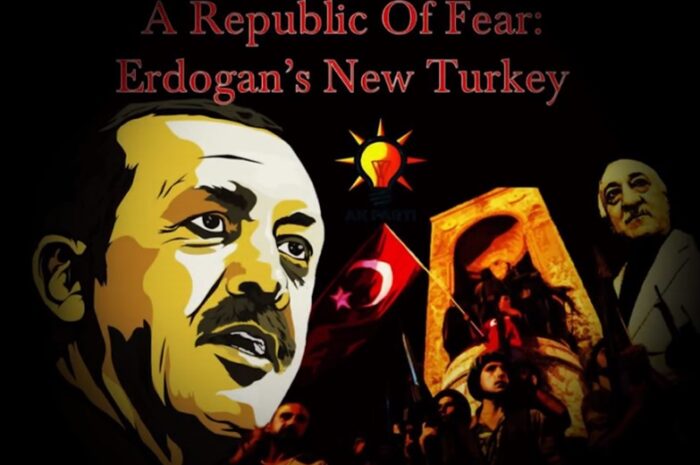
Note: The following article was originally uploaded as an assignment for James Cook University – HI2021: Modern Australian History. It was uploaded in 2022.
Question: What significance has the signing of the ANZUS treaty had on Australian history?
The signing of the Australia, New Zealand, United States Security Treaty (ANZUS) between Australia, New Zealand and the United States of America in 1951 has had a profound impact on the course of Australia’s foreign policy development in its history. Australia’s shift away from Great Britain for leadership in the world during the Second World War and its reorientation to the United States for defence was cemented through the signing of the agreement. The ANZUS treaty contributed to the establishment of a robust strategic military partnership between the United States and Australia, founded on the principles of cooperation, mutual aid, and a commitment to mutual defence in times of crises. Australia’s commitment to this partnership facilitated the country’s involvement in American spearheaded conflicts abroad during the Cold War in places like Indochina, and motivated Australian involvement in multilateral organizations like Southeast Asian Treaty Organization (SEATO). Australia’s foreign policy machinations as a Middle Power in the South Pacific acquired primacy in the decades following the treaty’s establishment, influencing the country’s ideological shift on foreign policy from anti-Asian racialism to anti-communism and significantly contributed to Australia’s sense of national identity on the world stage.

During the Second world war, Australia faced an existential threat of invasion from an expansionist Imperial Japan which had occupied multiple islands in the Pacific by 1942 (Department of Parliamentary Library, 1992, pp. 4-6). Great Britain being entangled in the European theatre of the conflict was unable to come to the country’s defence, forcing Australia to seek other avenues for security (David McLean, 2006, pp. 68-69). One of these avenues arose when US General Douglas MacArthur landed in Australia and was appointed Supreme Allied commander for the South pacific. MacArthur led Australian and New Zealand Army Corps to victory in the South Pacific, setting the groundwork for a military partnership between the United States and Australia (Queensland Government 2014).
The contribution of the United States during the war was integral for Australia’s geopolitical survival and influenced the country’s foreign policy trajectory, including its machinations as a Middle Power helping to shift dependence away from Great Britain for leadership (David McLean, 2006, p. 68). Bolstering the United States position as an emergent leader in the region was cemented with the signing of the Australian New Zealand and United States security (ANZUS) treaty on September 1st, 1951 (David Lee, 2005, pp. 430-431). ANZUS treaty, which was Australia’s first political alliance formed without British ascent and designed out of concern for growing fears about resurgent Japanese militarism and expansionist communism (Ibid, p. 430), established a robust strategic military partnership between the United States and Australia founded on the principles of cooperation, mutual aid, and a commitment to mutual defence in times of crises. Intelligence sharing, deference cooperation and a joint effort to combat the growing threats in Southeast Asia materialized from the basis of this treaty (David McLean, 2001, pp. 301-302).

The significance of the treaty to Australian history was evident in the military ventures and multilateral organizations that the country committed to in the years following the agreement’s signing. When China’s Communist Party (CCP) achieved victory over the mainland against Chiang Kai-shek’s Kuomintang in 1949, new security challenges of communism and revolution came to the forefront and posed existential threats for Australia. These perceived threats only gained momentum when the CCP provided support to Kim il-Sung’s North Korean forces in the invasion of South Korea in 1950 (David Lee, 2005, pp. 432-433). The conflict in Korea, along with Malay’s communist insurgency highlighted the severity of the threat posed by communism in South-East Asia (Ibid, p. 434). In a demonstration of the seriousness of Australia’s concerns, the country committed forces within the United Nations framework to the conflict to assist coalition forces spearhead by the United States (David McLean, 2001, pp. 302-303).
Two years following ANZUS signing, Australia expanded its role in Southeast Asian security through the country’s entrance into the collective security pact of the Southeast Asia Treaty Organization (SEATO), along with France, New Zealand, Pakistan, Philippines, Thailand, Great Britain, Borneo and the United States (Henry W. Brands, Jr., 1987, pp. 250-251). ANZUS treaty set the foundation for Australian involvement in the security of Southeast Asia (Ibid, p. 252). Through SEATO Australia committed to stabilization efforts in Malay, northern Borneo and deployed large numbers of ANZACS to Indochina to combat Ho Chi Minh’s Vietcong in the Vietnam peninsula. The country’s dedication to security in the South-east Asian Pacific as part of its commitment to ANZUS and the American partnership helped to shape Australian national interests (Department of Parliamentary Services, 2001, pp. 37-38). The alliance held popularity amongst Australians and allowed for Australia to shift its foreign policy ideology from British race patriotism as characterized by anti-Asian racialism to a broader anti-communism (David McLean, 2006, pp. 67-68).

One of the major theatres that Australia deployed forces in during the Cold war was in Vietnam (David McLean, 2006, pp. 71-73). Australia, interested in the security of South-East Asia, intervened alongside the United States to stop the spread of communism in Indochina (David Lee, 2005, pp. 431-433). Committing thousands of troops to the conflict, Prime Minister Harold Holt and later John Gorton asserted the importance of the US-Australia partnership in the country’s foreign policy machinations, with Gorton remarking in a dinner speech before the White House, “wherever the United States is resisting aggression … then we will go Waltzing Matilda with you” (Department of Parliamentary Services, 2001, p. 4). Gorton’s comments were not new as Prime Ministers prior such as Robert Menzies emphasized the importance of the alliance:
The dominant element in our foreign policy is, of course, to maintain friendly relations; to be good neighbours; to have powerful friends. Why powerful friends? Does anybody suppose that we could in our own strength defend ourselves against a major aggressor? The defence of Australia, therefore, though we must do our duty about it, is closely bound up with our foreign relations. That is why a truly Australian foreign policy requires the cultivation of friendships, and in particular a close alignment with…the United States of America.
– Robert Menzies (1958).

Australia acquired primacy in the South Pacific through the security afforded by relations with its great and powerful friend in the United States. This relationship which was only possible through ANZUS significantly contributed to Australia’s sense of national identity on the global stage. An insecurity of belonging that had once permeated the psyche of foreign policy machinations was replaced with confidence in Australia’s position as a rising Middle Power in the South Pacific which fundamentally allowed Australia to secure its own sphere of influence, underpinning the treaty’s significance to Australian history.
Word count: 915
Written by Anthony Avice Du Buisson (29/05/2022)
+Reference List:
Brands, Henry W 1987, ‘From ANZUS to SEATO: United States Strategic Policy towards Australia and New Zealand, 1952-1954’, The International History Review, vol. 9, no. 2, pp. 250–70, viewed 22 May 2022, <https://bit.ly/3wXH1LY>.
Department of Parliamentary Library 1992, Invasion 1942? Australia and the Japanese Threat, ‘Background Paper Number 6 1992’, Dep. Of the Parliamentary Library, viewed 20 May 2022, < https://bit.ly/3N2HFPk>.
Department of Parliamentary Services 2001, Upside, Downside: ANZUS After Fifty Years, Dep. Of Parliamentary Services, viewed 20 May 2022, <https://bit.ly/3z4OSdn>.
Lee, D 2005, ‘The Liberals and Vietnam’, Australian Journal of Politics and History, vol. 51, no. 3, pp. 429-439, viewed 20 May 2022, <https://bit.ly/3wWWk7z>.
Mclean, D 2001, ‘Australia in the Cold War: A Historiographical Review’, The International History Review, vol. 23, no. 2, pp. 299-321, viewed 21 May 2022, <https://bit.ly/3MYoTZn>.
McLean, D 2006, ‘From British Colony to American Satellite? Australia and the USA during the Cold War’, Australian journal of Politics and History, vol. 52, no. 1, pp. 64-79, viewed 20 May 2022, <https://bit.ly/3NDJC4w>
Menzies, R 1958, Election Speech 1958, Canberra [Online], viewed 22 May 2022, <https://bit.ly/3z6lKCG>.
Queensland Government 2014, South West Pacific campaign, WWII Historic Places, viewed 20 May 2022, <https://bit.ly/3wVprcB>.

![Rosette’s Heart – [Poem]](https://philosophyismagic.com/wp-content/uploads/2021/02/rosetta-nebula-1-700x465.jpg)


